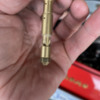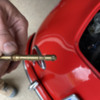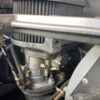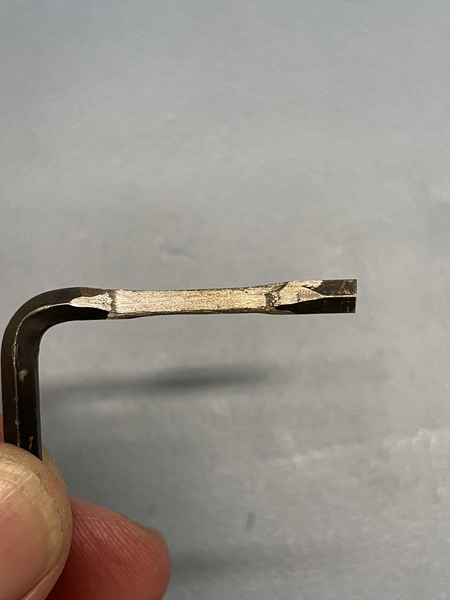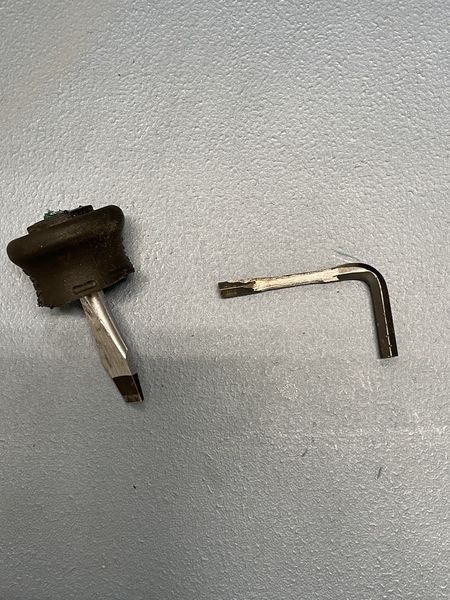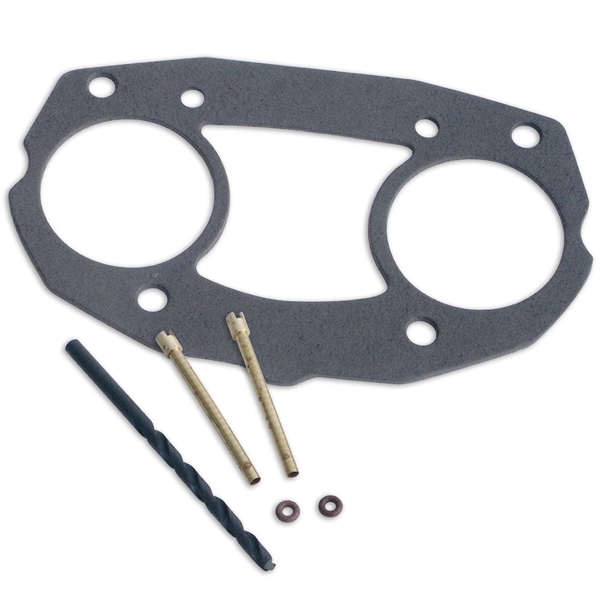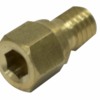Honestly, cleaning them out is not that big a deal. You don't need any advanced degrees. If you follow my instructions, you can clean the carbs without taking them off the car. But you have to follow my instructions, and you can't skip any steps.
You have Spanish Webers, which is a GOOD thing.
Before you do anything, check your fuel pressure. This is OFTEN overlooked, but important. No more than 3.5 psi with Webers. Period. If it's over, it will NEVER run right.
1: Disconnect the battery, OR massively tape/insulate the hot wire on the alternator.
2: Remove air filter tops and air filters.
3: Remove the 4 nuts on ONE carburetor that hold the velocity stacks and air filter base/linkage in place. Use a magnet on the nuts and washers so you don't drop them. Remove the two velocity stacks. Gently lift the air filter base up, keeping tension TOWARD the center of the car. There should be a spring inside the hexbar on both sides. You don't want them to fly off! Gently release the tension and grab the springs.
4. My advice, do one carb at a time. With the air filter base removed, you can lay the hexbar down, making sure it DOES NOT TOUCH the hot post on the alternator. Remove fuel hose, usually just a hose clamp.
5. At this point, you can follow these instructions:
https://mirrors.disavowed.jp/w...c.com/weber_tech.htm
If it's easier for you, the carb can be removed and cleaned on the bench.
FWIW, I use 10mm(plus 1mm for the gasket, so 11mm total) for the float height and 30mm for the drop. The drop isn't as important as the cutoff valve, but both should be identical.
And just removing the idle jets and cleaning them is NOT the whole job. The entire idle CIRCUIT must be cleaned. This involves the idle mix screw AND the idle jet. Both must be removed so the circuit can be flushed out. Carb cleaner squirted through the circuit both way works. Some carb cleaner will squirt into the main fuel well, that is where the idle fuel comes from.
My money is on goo in the float wells and idle circuits. You will most probably see white goo, black dirt, and possibly some varnish in the float wells. I cleaned the wells with the carbs on the car a few times. Lint-free rags are a must here. Paper towels or cheap rags will not do.
6. Do the other side.
7. Reinstall one carb top, tighten all the hardware, then lightly grease the hexbar springs and balls. Re-assemble, carefully.
8. After all this work is done, you'll need to synchronize the carbs. Do it engine HOT, not cold, not idling for ten minutes. You MUST drive the car and get it HOT, the synch.
Any questions, read Mark Harney's articles referenced above, or ask here. If I don't respond(doubtful) PM me.


